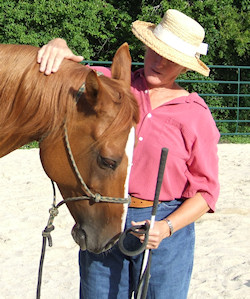Bringing It All Together: Workouts
Part 2. Dixie on the Lead
After feeding and watering, leading is about the most fundamental equestrian skill, for both horse and horseman. If you and your horse can't work out who is in the lead (and who isn't) while your feet are firmly planted on the ground, you're not likely to have much more luck when you're in the saddle.
When you’re leading your horse, it is his job to stay in position and match your moves (not vice versa)... fast, slow, forward, backward, left, right, stop, or go; whatever you say, goes. In order to accomplish this your horse needs to watch you all the time, and this should be naturally easy for him, since it is precisely how horses keep track of what is going on in the herd: they keep their eyes on the leader and read his body language, then they follow his lead. When you show your horse that you are the leader, he will begin to watch you for cues and he will position himself without you having to constantly tell him what to do.
First, you need to decide where you want your horse to be when you're leading him. Personally, I like my horse's head to be about even with my shoulder. Some people like to walk ahead of their horse, and some like to walk at the horse's shoulder; it doesn't matter so long as you are consistent with your cues. He'll get the idea. If you lead with your horse at your side, however, be sure that he stays two to three feet off to the side so that he is not crowding you. If he walks too close, reach behind with the end of the lead line or the stick to brush him off to the side.
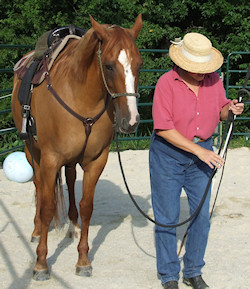
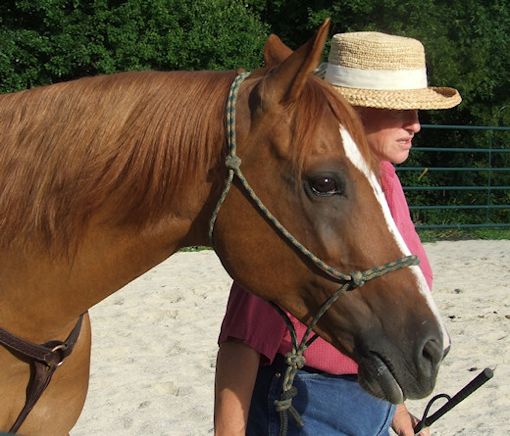
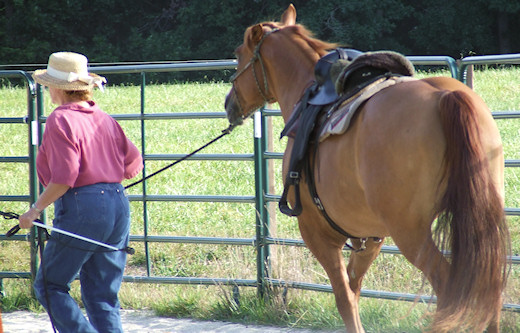
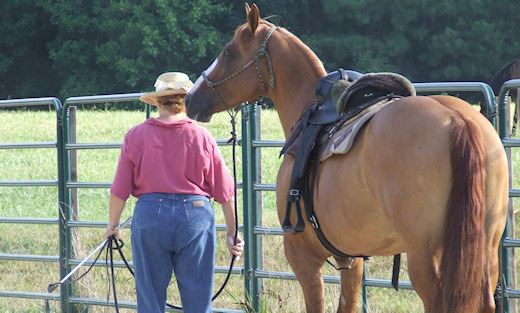
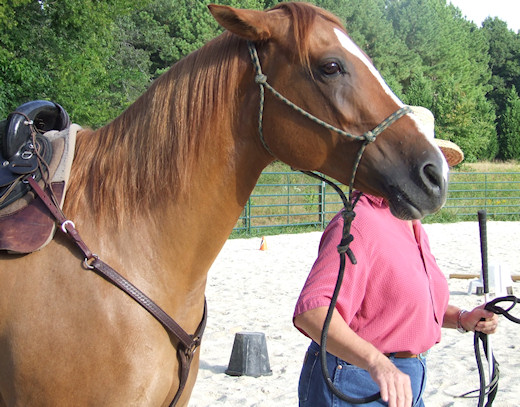
Dixie still puts her head up and her ears back when she is asked to back up. I'm not worried about this right now, though, because she is backing softly and well, and with repetition she will learn that there is nothing to fear, and her anxiety level will come down.
